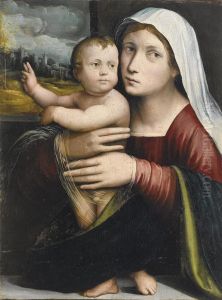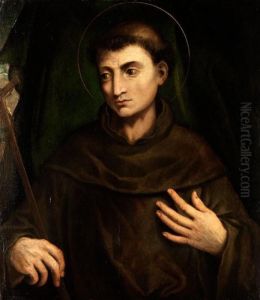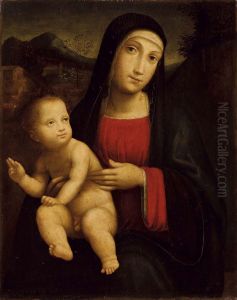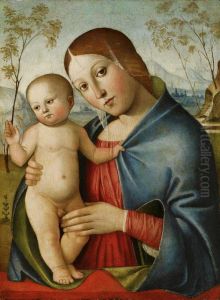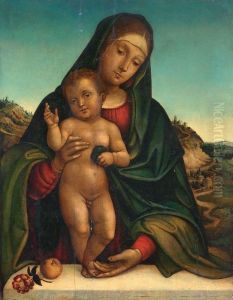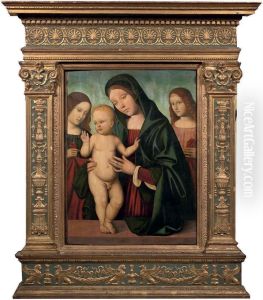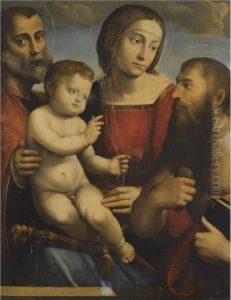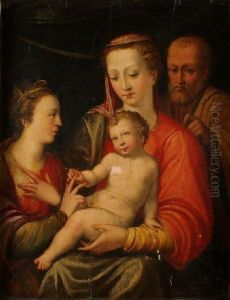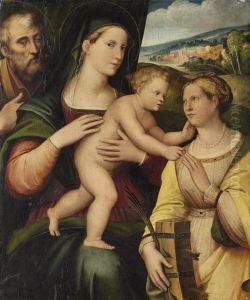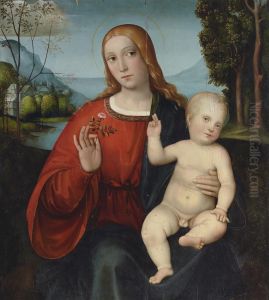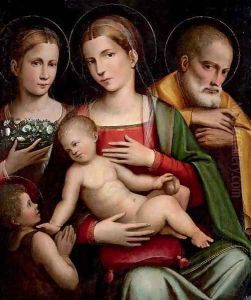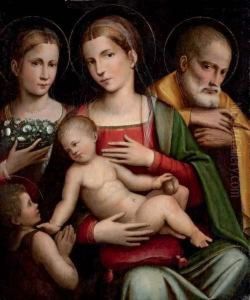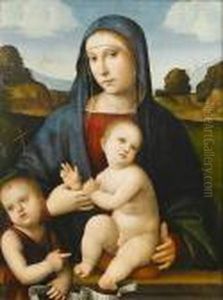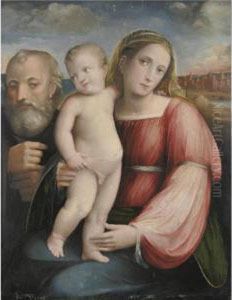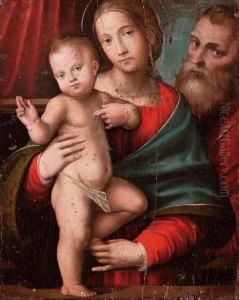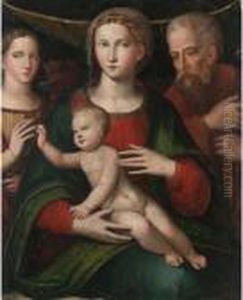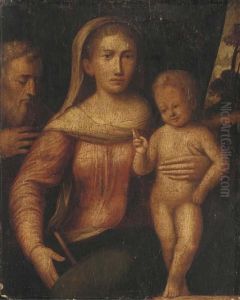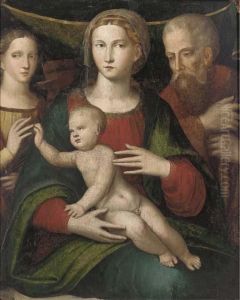Giacomo Raibolini Paintings
Giacomo Raibolini, better known as Giacomo Francia or Jacopo Francia, was an Italian painter of the Renaissance period, born around 1484 in Bologna, Italy. He was the son of Francesco Raibolini, commonly known as Francesco Francia, who was also a prominent painter and goldsmith. Giacomo was one of Francesco's many children and became his father's pupil and assistant, which was common in artist workshops during the Renaissance.
Giacomo's style was heavily influenced by his father's work, and after Francesco's death in 1517, Giacomo took over the workshop along with his brother Giulio. The brothers worked together and often collaborated on paintings, which makes it difficult to distinguish their individual contributions. Their joint works are sometimes signed 'Iacobus et Iulius de Francia fratres.'
The work of Giacomo and Giulio continued the tradition established by their father, characterized by graceful figures, a clear narrative style, and the use of bright colors. They also maintained the family's reputation for high-quality altarpieces, religious works, and portraits. Giacomo's own style is noted for its sweetness and delicacy, as well as a certain conservatism, as the art world was moving towards Mannerism.
Despite the challenges of attribution, Giacomo is credited with several works, including the altarpiece in the church of San Giovanni in Monte in Bologna and a 'Madonna and Child with Saints' in the Pinacoteca Nazionale of Bologna. His works can also be found in various churches and collections in Italy.
Giacomo continued to work and maintain the family workshop throughout his life. He witnessed the changing tides of artistic styles but remained largely faithful to the artistic language he had inherited from his father. Giacomo Francia passed away in 1557 in his hometown of Bologna. His legacy, like his father's, is tied to the city of Bologna and the transitional period between the High Renaissance and the emergence of Mannerism in Italian art.
